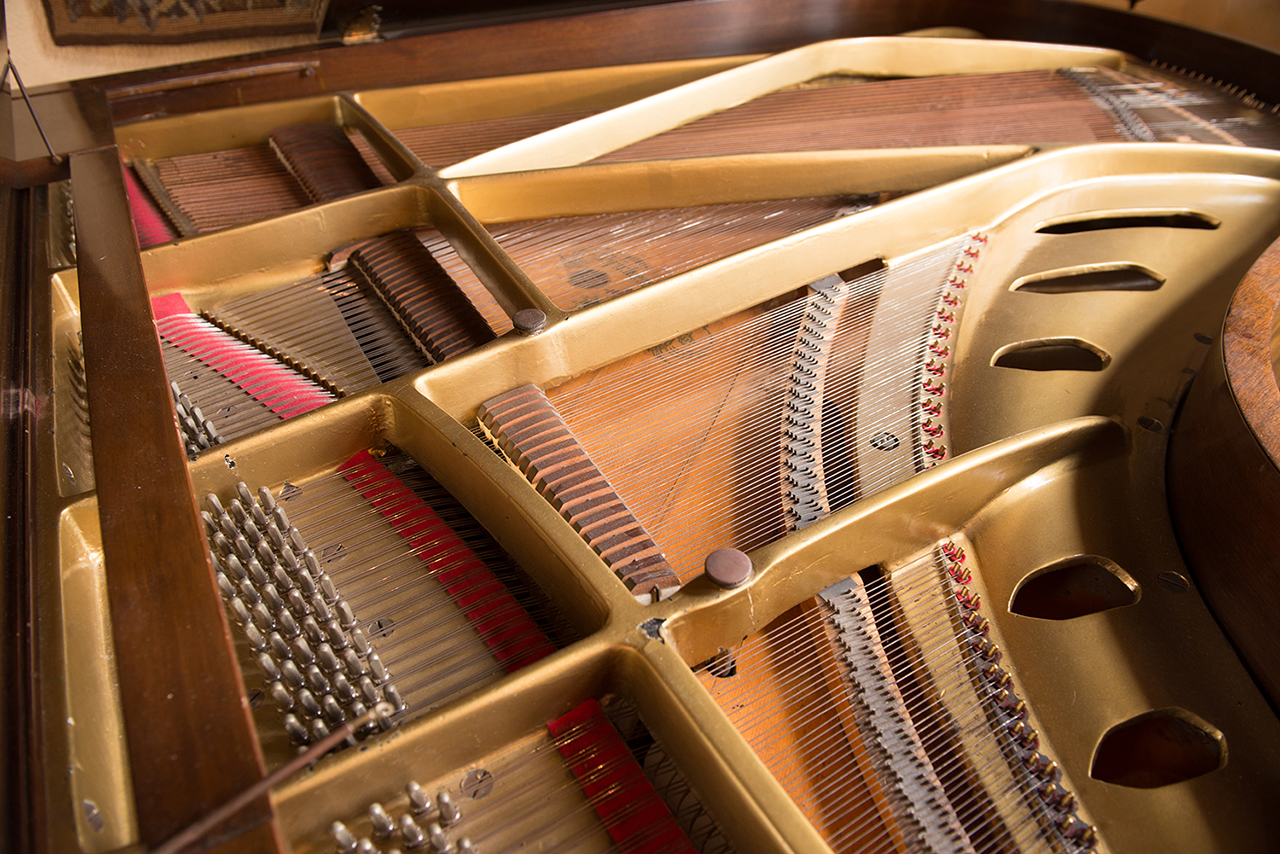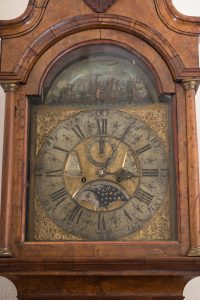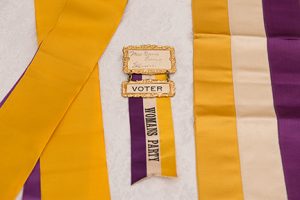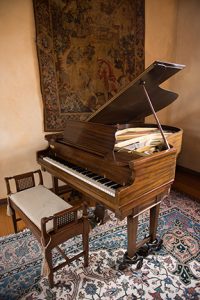This fall will mark the 90th anniversary of Sunset Hill, also known as Ewing Manor in Bloomington. The historic home, run by the Illinois State University Foundation, has found new life under the guidance of Director Toni Tucker, who sees herself as caring for the legacy of the women who built the historic manor and gardens.
“The world could certainly use a woman like Hazle Buck Ewing now,” said Tucker of the philanthropist, suffragist, political activist, and powerhouse whose workers broke ground on Sunset Hill in March of 1928. An heiress of the Wrigley Company (think of the gum and former Cubs stadium fame), Ewing and her husband, Davis, designed the home and filled it with objects from their world travels. Read more about Hazle Ewing.
Since 2015, Tucker has been working to understand and catalog the many pieces and correspondence housed at the manor, and even more donated by the Ewing’s grandchildren. As the 90th anniversary grows near, Tucker takes a moment to give some of her favorite, artful artifacts from Ewing Manor.
A clock for the centuries
A grandfather clock crafted between the years 1750 – 1775 dominates the main foyer of the manor. The imposing look is allayed by a gentle chime singing on the hour and half hour. Designed by famed Dutch clockmaker Gerrit Hofman, it features a masted ship dancing in waves carved in metalwork.
The clock stopped being wound when Hazle died in 1969. It wasn’t until 2015, when a donor paid to have the clock restored by Roy Laws to celebrate her mother’s 100th birthday, did the chimes of the clock ring through Ewing Manor again. Tucker takes time every Friday to wind the clock, with the original key. “When I think of how many caretakers have held that key, and how I will pass it along to the next caretaker, it honestly makes me a little teary,” she said.
Votes for women
Tucker gently removed a sash from an archival box. Though frayed on the edges, the silky tri-color material still represents the promise of empowering women through the vote. “Hazle took part in suffrage marches in Washington, D.C. and Chicago,” said Tucker, as she ran her hand along the broad stripes of purple, white, and gold on the sash.* The box also contains letters from and about Hazle’s cousin, suffragist Lucy Ewing. Part of the National Woman’s Party, Lucy Ewing was arrested for picketing for suffrage in 1917, and served a sentence in the Government Workhouse at Occoquan in Virginia. Hazle Ewing received updates on her cousin from Margaret Fay Whittemore, an organizer for the Congressional Union for Woman Suffrage.
88 keys for a Chickering
Music remains a staple of Sunset Hill. A photo on the wall shows Hazle Ewing at the piano with her son, Nelson, on the violin. That same piano still sits in the main room of the manor. Crafted in 1919 by the masters Chickering & Sons in Boston, it was shipped to Chicago before Ewing bought it for a house she and Davis Ewing owned on East Olive Street in Bloomington. When Sunset Hill was complete, it found a home at the manor. “It’s unique, not just because it is was made by such well-known craftsmen, but because it was a combined piano and player piano,” said Tucker, who worked to have the piano restored with the help of David Horine. “Everything but the player piece is working, and we often use the piano during events.”
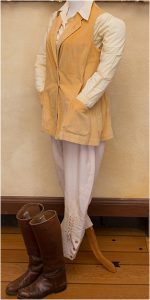
Hazle Buck Ewing’s favorite riding outfit. The manor now houses more than 200 pieces of clothing that belonged to Hazle over the span of 50 years.
Fitted for riding
Against the light florals and melon-colored walls of Ewing’s bedroom stands a mannequin donned in a lively, yellow riding suit. “Hazle rode every day she could,” said Tucker, who has placed photos of Ewing on horseback, riding around the grounds that once stretched for miles. The manor now houses more than 200 pieces of clothing that belonged to Hazle over the span of 50 years. “It’s incredible to see the longevity of the clothes. They were made to last,” said Tucker, who added descendants of Ewing will sometimes send outfits to Tucker after they visit the manor and see similar ones in photographs. “There is a dedication of Hazle’s family to preserve her legacy, and I’m grateful for their willingness to share that legacy with us.”
A portrait comes home
That same riding outfit can be seen in the main room, worn by Ewing as she looks out from a 1936 oil painting by noted artist Alfred Partridge Klots. “Hazle brought Klots over from Paris. He had been painting the portraits of Catholic Church officials and heads of state, so I wondered how she lured him to Sunset Hill,” said Tucker, who found a possible clue in a biography of “It turned out that Klots’ parents divorced—a scandalous thing to do in the 1800s. His mother fled Paris for a time for America, and stayed with friends by the name of Funk, the same Funks who took up residence in Funks Grove. So he must have known about Bloomington, or could even have visited it as a boy.”
The painting of Ewing remained in the manor until her death in 1969. When Tucker noted photos of the painting hanging in the main room, she asked family members about it, and discovered it had been moved to the family’s ranch home in Wisconsin. “I found the original crate that held the painting and took it to the family, along with a plea that we could make a digital copy of it to hang in the manor,” said Tucker.
Ted Ewing, Hazle’s oldest grandson, drove for seven hours to deliver the painting to the manor. Tucker assumed they would make a copy and bring it back, but Ewing looked at her and said, “She’s home. This is where she belongs.” The original painting hangs once again in the main room, across the room from a Klots painting of Ewing’s mother, Lillian Brewer Buck. “There are days, when the house is full, I can swear, I see her smile,” said Tucker.
*The National Women’s Party reports the meaning behind the three colors of the suffrage flag: “Purple is the color of loyalty, constancy to purpose, unswerving steadfastness to a cause. White, the emblem of purity, symbolizes the quality of our purpose. Gold, the color of light and life, is as the torch that guides our purpose, pure and unswerving.”
